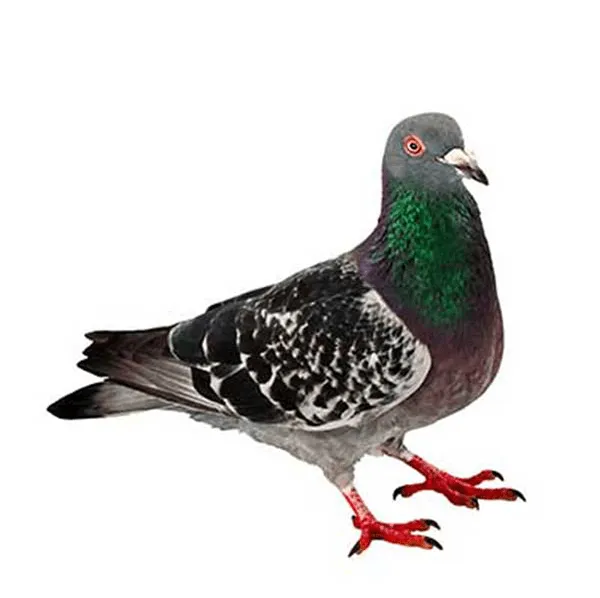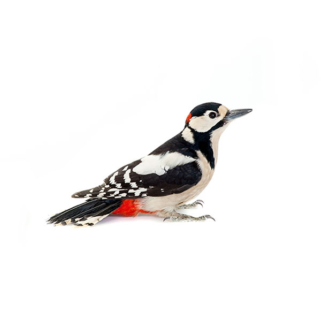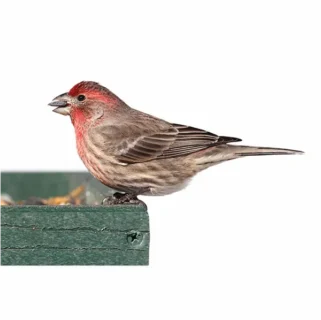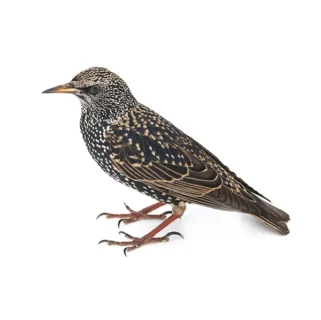Pigeons Identification
What Do Pigeons Look Like?
Pigeons, also known as rock doves, are medium-sized birds with stout bodies and relatively short legs. They have grayish-blue plumage with iridescent patches on their necks and wings. Their heads are often a slightly lighter shade of gray, and they have distinctive dark bands on their wings. Pigeons have small heads with round, dark eyes and a short straight beak.
Learn more about other common birds found in North Carolina to help identify the specific bird you are dealing with.
Signs of a Pigeon Infestation
Signs of a pigeon infestation include noticing a large amount of droppings, which can accumulate on surfaces such as roofs, ledges, and windowsills. Pigeons are noisy birds and often coo or make other vocalizations, especially around nesting sites. They build flimsy nests made from twigs, feathers, and other materials in sheltered areas such as building ledges, eaves, or trees. Pigeons can cause noticeable damage to buildings by pecking, nesting, and roosting, leading to issues like clogged gutters and damaged roofing materials.
Habitat, Diet, Life Cycle & Impact
Where Do Pigeons Live?
In the wild, pigeons often live on or near large, rocky cliffs. In cities and towns, pigeons are dependent on humans to provide them with food, roosting, and nesting sites. These birds nest on window ledges, roofs, air conditioning units, traffic lights, commercial signs, and under bridges. Although they prefer grain and seed, pigeons consume garbage, insects, bread, and other handouts from people. Wherever they nest, food and water are often in plentiful supply, but when it isn’t, the birds seek resources from nearby rural or undeveloped areas that are generally within their flight range. Pigeons can breed year-round, and peak mating seasons are spring and fall.
Diet of a Pigeon
Pigeons have a mixed diet, consisting mainly of seeds, grains, and fruits. They are also known to consume insects, small invertebrates, and even human food scraps. Pigeons forage on the ground, pecking at food sources in urban areas, parks, and agricultural fields. Their ability to adapt to a wide range of food sources contributes to their success in diverse environments around the world.
Life Cycle of a Pigeon
The life cycle of a pigeon begins with courtship displays, where males strut and coo to attract females. Once paired, the female selects a nest site, often on ledges, buildings, or trees. She lays 1-2 eggs, which both parents incubate for about 17-19 days. After hatching, the chicks are fed pigeon milk, a specialized secretion from the parents’ crop. They fledge around 25-32 days old and become independent shortly after. Pigeons can have multiple broods per year.
Impact of Pigeons
The serious and constant public health problems feral pigeons create are unmatched by any other bird species. Pigeons are known to carry or transmit several diseases and their droppings and feathers can contaminate food destined for human consumption. Their droppings deface and accelerate the deterioration of homes and buildings and also contaminate areas where people walk or work. Pigeon droppings and nests clog gutter downspouts and air intakes, mar window sills, and render fireplaces and fire escapes hazardous. Pigeon ectoparasites include chewing lice, ticks, and mites, some of which bite people, which is why control of this common urban pest should always be a priority.
If you discover pigeons roosting on your property, contact a professional bird control company immediately to discuss a proper course of pigeon control.
Are Pigeons Aggressive?
Pigeons are not inherently aggressive towards humans. They are generally docile birds and often coexist peacefully with people in urban environments. However, they may exhibit aggressive behavior towards other pigeons or competing birds when defending their nests or food sources. If they feel threatened or cornered, they may peck or flap their wings defensively, but such instances are rare.
Pigeon Prevention Tips
To prevent pigeon issues:
- Buildings/ outside: Seal off openings and gaps in buildings to prevent pigeons from roosting or nesting.
- Deterrents: Install physical deterrents like bird spikes, netting, or sloped ledges to discourage roosting.
- Food: Minimize food sources by securely storing garbage and covering compost bins.
- Habitat areas: Trim trees and vegetation near buildings to reduce perching and nesting opportunities.
- Cleanliness: Regularly clean up food scraps and spills to discourage pigeons from foraging in the area.
Do you need Pigeon pest control? Contact our local Bug Out team to assist you.
Need help with Pigeons control?
Need Pest Control Service?
Leave your information below and we’ll be in touch with a FREE quote!
"*" indicates required fields
*During normal business hours. After hours calls will be returned the next business day.
FAQs
Does WD-40 keep Pigeons away?
While some claim that WD-40 can deter pigeons due to its smell and taste, there is limited scientific evidence supporting its effectiveness as a pigeon deterrent.
Where are Pigeons mostly found?
Pigeons, also known as rock doves (Columba livia), are found worldwide in urban, suburban, and rural areas. They are commonly seen in cities, parks, plazas, and around buildings. Pigeons are adaptable birds and can inhabit a wide range of habitats, including cliffs, ledges, and even agricultural areas, as long as there is access to food and suitable roosting sites.
Are Pigeons protected in North Carolina?
In North Carolina, pigeons are not protected by state or federal wildlife laws. They are considered non-native and invasive, and no regulations are protecting them. However, it’s always best to check with local authorities, wildlife agencies or our professional bird control experts for any specific regulations or guidelines regarding wildlife management in your area.





